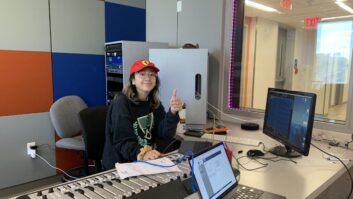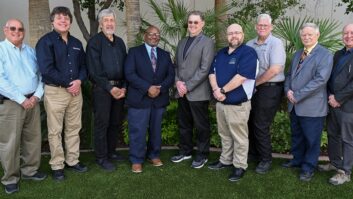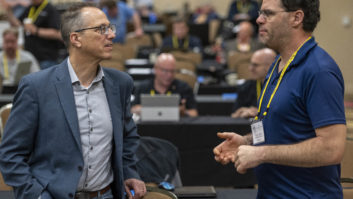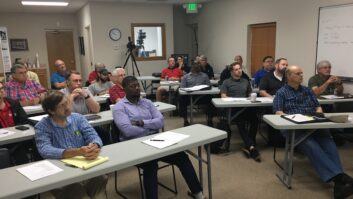
WBUR(FM), Boston, Chief Engineer and Radio World Engineering Extra Technical Editor Michael LeClair reflected on the technical challenges of handling the Boston marathon bombings.
The station ramped up from what he describes as a skeleton staff to a total of 50-plus reporters, producers and engineers over some 45 minutes. WBUR interrupted its normal program schedule with what it calls “rolling coverage” from 4 to 11 p.m. Monday, according to LeClair. “As we ramped up the requests from other stations started to roll in from other states. We allowed anyone that wanted our live programs to grab them from our Web stream, which has good enough quality for distribution. For the evening ‘On Point’ show we put our program up on a live satellite feed for the system to share.”
During an emergency like this, the role of engineering is to make sure the journalists and show producers have everything they need. After the editorial decisions are made on when and where to break format, the engineering staff had to find the studio space and technical support staff to build the shows. “That meant alternating shows between our two large control rooms with the room to handle multiple studio guests and a large production staff. As one live program segment ended we would move to another live segment in the other room in order to allow a different set of producers and hosts to prepare for their show and complete any last minute pre-production.”
LeClair says the biggest challenge was providing enough phone connections to handle the number of call-out guests and audience call-ins. Only one of WBUR’s studios is equipped with a full-fledged phone system (a Telos NX-12 featuring four hybrids) with a six-line hunt group and outgoing guest lines. So Monday night they had to figure out how to get that phone system to handle calls while staff produced a show in the second studio. “Our solution was to put an additional audio engineer and producer in the studio with the phone system and route the audio between the two rooms. About 20 minutes to air I was working with the technical director to build a new mix-minus on both consoles that would get the right audio to every call without feeding anything back.”
He continues: “As with anything that will be broadcast nationally we made a last minute test from a cellphone into the system to confirm we had it right and then it was straight to air. We kept aside two to three lines for call outs to guests that were arranged by the show producers. It’s important not to tie up all the lines with listener calls. Tuesday, faced with a similar situation, we had a few hours to create a second phone line hunt group and quickly put in a call-screen monitor for the talent so that we could replicate the telephone capabilities of the main studio as best as possible.”
The central technical routing system was a critical part of being able to handle some of the unusual program needs. LeClair tells RW he made changes to allow signal visibilities in places that they are not ordinarily used but were needed for the new shows. “This is a simple software task on modern routers, rather than the patch cords and rewiring that would have been required on older analog systems. Most of those changes took less than five minutes to prepare.”
A second role for engineering is to just be ready for any request that may come through, no matter how out-of-the-ordinary it might be. “Staying calm and helping producers stay calm is the best way to keep mistakes to a minimum. Once panic sets into a control room the quality of the coverage decisions quickly declines and talent loses their ability to sound informed and confident. Sometimes all you have to do is reassure someone that we are ready for an unusual situation at the technical level. It helps a great deal to have on staff experienced audio engineers and technical directors for national shows who are practiced at keeping a show on time and sounding good,” notes LeClair.
With special programs going out live to a national audience the engineering staff also had to keep track of ordering live satellite time and WBUR’s local subscription to monitor these shows.
Having a stock of extra small items, like microphones, digital recorders and cables on hand to equip the extra reporters that are brought onboard as stringers or part-timers is important, he adds, to get those people working quickly.
WBUR reporters largely used cellphones to report from the field, in most cases live two-ways with the studio. “In some cases we ran into problems with network congestion but largely this worked for us. We had enough people in the field that if someone was temporarily unable to connect we had the choice of several others to put on the air.”
Finally, the engineering staff set up extra televisions in staff common areas so that everyone could stay on top of the story while taking needed breaks.
“All in all we had what we needed to handle the coverage but it stretched our studios to the limit. In particular we have already decided we need to upgrade the phone system in our second studio so that it is as powerful as our main phone system is today.”
The station was returning to normal programming last night.












